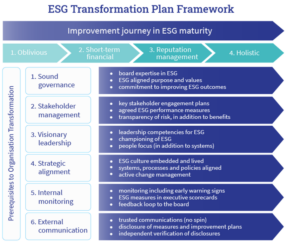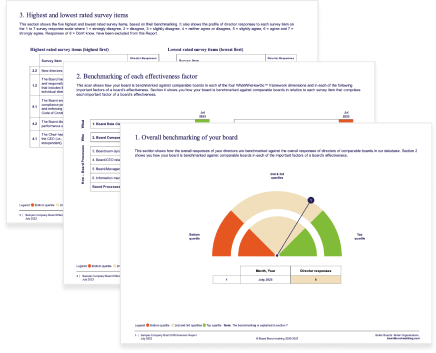Boards and climate risk: The new rules changing corporate governance
Every hour, climate change drains $16 million USD from the global economy – an unstoppable force reshaping financial risks and corporate responsibility. Australia stepped up in 2016, ratifying the Paris Agreement to confront this growing threat. Fast forward to 2025, and the government is raising the stakes: large businesses and financial institutions must disclose climate-related financial risks, reinforcing the critical role of corporate governance in these challenges. The Australian Accounting Standards Board (AASB), a government body, has crafted the Australian Sustainability Reporting Standards, synced with the International Financial Reporting Standards (IFRS), to steer companies toward transparent, actionable reporting.
These standards set practical expectations for businesses facing a warming world:
- AASB S1 lays the groundwork, requiring disclosures on how sustainability shapes financial health—consider how a shift to electric vehicles might boost a manufacturer’s bottom line.
- AASB S2 dives into climate specifics, demanding reports on risks like heatwaves slashing crop yields or opportunities like solar farms powering new revenue, all tied to cash flows, loans, or borrowing costs over time.
- Companies must deliver transparent details on governance, strategy, risk management, and metrics—including scenario analyses of events like a 1.5°C temperature spike or a carbon price jolt—to ensure credibility and sidestep greenwashing. Fun fact: Australia’s 2022 floods cost insurers AUD 5.5 billion, a stark reminder of what’s at stake.
The government is rolling this out in three phases, aligned with AASB S2, giving businesses breathing room to sharpen their tools: stronger governance, smarter strategies, better systems, and skilled teams. This isn’t just compliance, it’s a chance to turn risks into rewards. Research shows that companies with sustainability woven into their core cut climate risks and boost long-term value. AASB S2 digs into the nitty-gritty: board expertise (did you know 70% of Aussie directors now list climate as a top priority?), roles, and mandates, plus how managers embed climate oversight into daily operations.
Realigning governance for a climate-ready future
This isn’t a quick fix. Realigning takes three to five years, with solid progress in one to two. Our ESG Transformation Plan Framework, built to match IFRS and AASB standards, guides companies to nail AASB S1 and S2 disclosures. It’s about delivering hard-hitting financial insights on governance and management to investors, dodging greenwashing along the way. Read our ESG whitepaper for further details.

Navigating climate risk and evolving regulatory expectations requires more than compliance. It’s an opportunity to strengthen corporate governance, enhance resilience, and drive long-term value. Whether you’re refining your board’s sustainability strategy or preparing for AASB-aligned reporting, we can help.
Contact us to learn how our ESG Transformation Plan Framework, expert guidance, and tailored surveys can help your board achieve best practices in climate governance.



